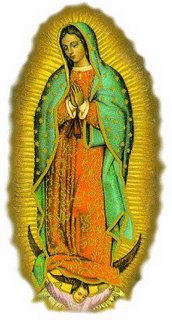 It is difficult to know how to review these without spoiling them
It is difficult to know how to review these without spoiling themIn brief, I can say that there are some definite parallels between them and yet they have a completely different feel. Both are cautionary tales about man's meddling with things that he should not. Both leave Robert Neville as the sole survivor of an insidious disease that either kills the infected or completely changes any survivors into monsters which prey upon normal people. In the book the people look normal but actually are regular cross-hating, garlic-shunning, sunlight-hating vampires. In the movie, the people become animalistic monsters that the girls and I dubbed "zom-pires" as they seemed a strange mixture between fast moving zombies and vampires.
The book, written in 1954, is fairly typical of a genre of science fiction of the time. The details of Neville's life are told completely from his thoughts. Between the daily details of making stakes to kill vampires, teaching himself science to try to identify what has caused the disease, and his struggles with loneliness, there are flashbacks from his dreams which fill in what happened to his wife and daughter. Neville was a worker in a plant before the disaster, not a high level intellectual at all, and thus is more of an "every man" than one would expect. I actually found this quite interesting and was riveted right up until the last chapter, which surprised me by entirely changing the entire tenor of the book for me. I will not say more because the I don't want to give away plot points. As I say, they are often parallel to the movie, but made for different reasons with different results which provides quite an interesting contrast when considering both presentations of the story.
The movie is also of its time and turns the scenario into an action-thriller which nonetheless remains strongly life-affirming and redemptive. The movie functions well as a tale of the end-of-the-world (images of abandoned New York are still flashing into my head two days after seeing the movie), an action/horror movie (those zomb-pires are freaky strong and scary with lots of sharp teeth and ear piercing howls), and a story that illustrates what is good about man as exemplified in Robert Neville. Neville in this scenario is a high level scientist who did not cause the disease but is dedicated to finding a cure and carries on his experimentation daily in a thorough fashion. Flashbacks are provided in dreams which fill us in on his family and what left New York City in the disastrous state in which it is presented.
The elements that bring the movie most strongly to life are the detailed touches such as herds of deer in New York, "renting" DVDs each day, a scene with Shrek (of all the unlikely things), and Robert Neville's stubborn dedication to finding a cure for the disease. This seems nonsensical at one point as the disease clearly has won and one wonders why he bothers. However, this is brought into focus by his telling of his hero Bob Marley's reason for putting on a concert two days after being shot by a gunman.
The people that are trying to make the world worse never take a day off, why should I? Light up the darkness.All things considered I much preferred the movie to the book. That is not to say that there are not plot holes or flaws in the movie that some such as Roger Ebert have complained about. There is still running water for example. However, these also are things that the original book didn't bother explaining. The author, for all his dedication to various details of survival, left completely unexplained such things as running water, electricity, getting gas for the car. Movie viewers are unlikely to mind either.
The point of the movie is to tell the story and it does so in a compelling fashion. Well done indeed and it is going on my list of the year's best movies.
Note: Although this movie is PG-13 it is definitely horrifying in many of the situations and not suitable for younger children. Hannah and Rose saw a family with a boy of about 8 or 9 sitting near them. Thankfully, after about half an hour they left. I think that is just about the time that Neville is setting off with his flashlight ... a sequence so very suspenseful that I spent much of the time breathing deeply and deliberately looking around the audience just to break the tension. With that said, the violence is quick and not prolonged so that there are not scenes of a disturbingly graphic nature. It was quite well done in implying those scenes or showing them quickly enough that one is carried on in the action.
Cross-posted at Catholic Media Review.








